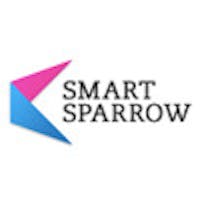I love my job. I really do. While leading what I consider the most forward thinking learning design studio in the edtech industry, I also get to travel across the U.S. and discuss teaching online with some of the most innovative faculty in our nation’s higher education institutions. Along the way, I hear a consistent chorus of cries for help: How do I move away from this expensive text book? How can I harness the latest technology? Is there an effective way I can flip my classroom?
Faculty often expect me to begin our conversations by telling them that my adaptive authoring platform is the answer to all their problems. Instead, I explain that most of the innovation happens before they even open up the Smart Sparrow tool. And then I start talking about students.
Delivering content without understanding the learner is no better than the off-the-shelf solutions that most educators are trying to escape. And keeping the focus on students is essential for anyone who wants to design an engaging and meaningful online learning experience.
Here are the five principles to follow when starting any online course development, culled from conversations I’ve had with hundreds of educators:
1. Solve for One
The concept of designing for the needs of one individual is not new to anyone familiar with product development, where the creation of personas is an integral part of the design process. In learning design, we aim to create an experience that mimics that of a personal tutor; creating personas based on student data help ensure that individual student needs are being considered in each step of the design process. Most learners fall somewhere on the spectrum of “struggling to understand and stay engaged” to “high achiever and fully engaged”. With a high achiever persona, for example, consider ways to incorporate additional content or nuance to help stretch the student beyond his or her current understanding.
2. Begin with a Blueprint
Blueprints, storyboards, wireframes. In nearly every project-based occupation, professionals start with a clear plan of what they’re trying to accomplish and how they are going to get there. While instructors may want to dive right into a platform and begin designing a lesson, planning is a vital first step. Begin with a concise, action-oriented learning objective to focus the lesson. Then add components until you are able to visualize a complete lesson that integrates media, such as videos or simulations, without straying from the intended learning.
3. Build In Opportunities to Fail, and to Shine
Instructors often know—either intuitively or from years of experience—where students will struggle with certain concepts. Adaptive tools allow instructors to design questions that address common misconceptions within a lesson, and provide meaningful and effective feedback in real time.
4. Consider the User Experience
Creating online lessons requires a thoughtful approach to layout, reducing visual complexity and using cues to help a student better grasp the main concept. While it is tempting to incorporate multiple visual resources or extensive amounts of information, less is often more when it comes to design. Similarly, use the same navigation design principles—such as how students can move to the next screen or where they can find additional information—throughout the lesson. When students can intuitively predict where certain information will be or where a question will appear, they can focus more on the concepts and less on figuring out what to do next.
5. Embrace the Power of Data
A continuous improvement mindset is important. Back-end learning analytics, for example, can reveal where large numbers of students are struggling, and may provide insights into questions that require new feedback or content areas that need more development. Data can also highlight how students are interacting with the content and illuminate things that are working well—students’ lightbulb moments.
To help faculty dive even further into the art of learning experience design planning, Smart Sparrow teamed up with Florida-based St. Petersburg College. With support from the Bill & Melinda Gates Foundation, we developed the Learning Design Starter Kit. We hope it offers useful insights into how to create engaging, student centered and data-driven adaptive lessons.
During the upcoming months, our studio will share key elements of great learning experiences and the best practices that we use. We’d love to know your thoughts on what makes a learning experience great; please reach out to us on Twitter, or join the conversation on LinkedIn.



